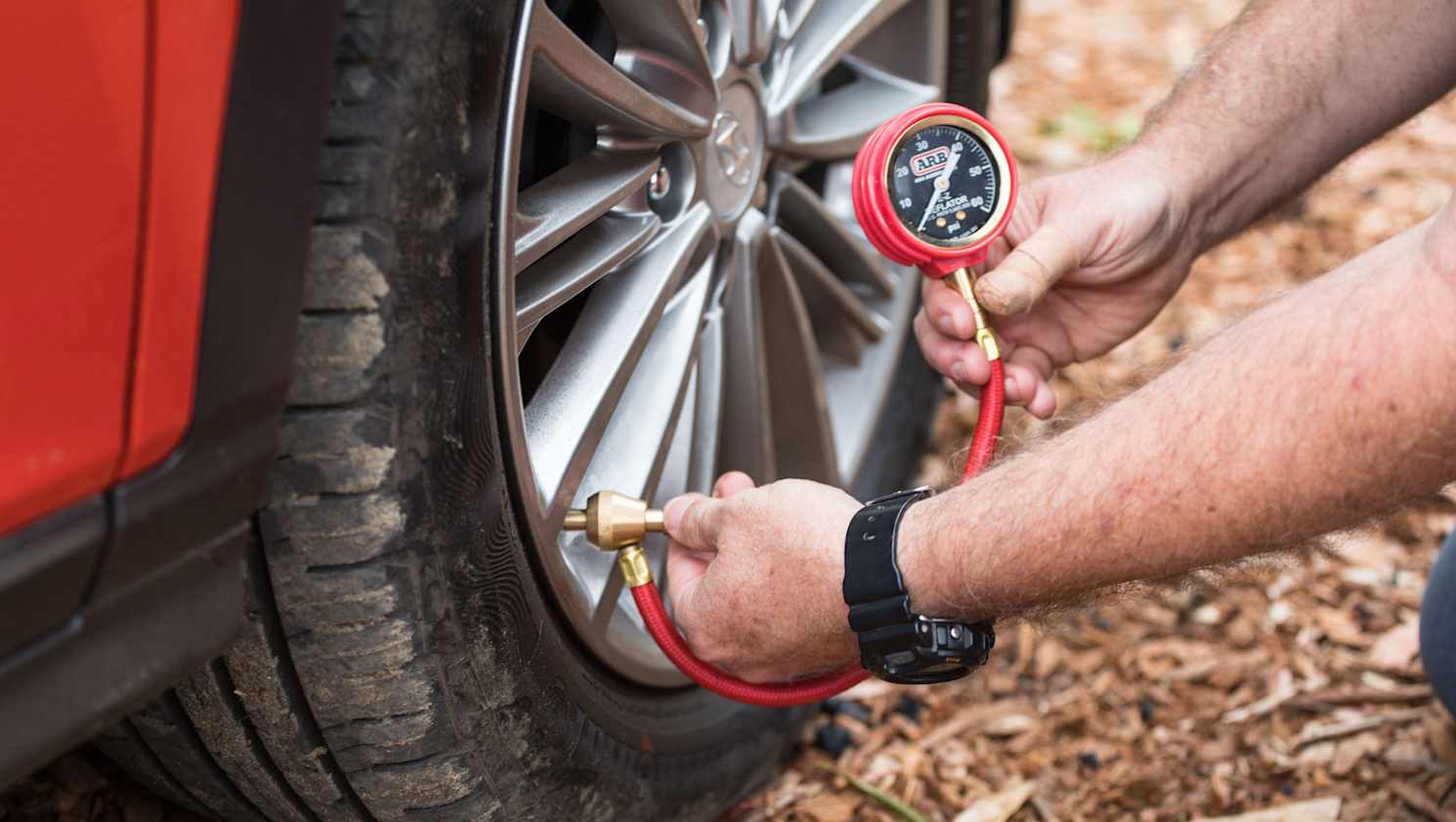There's one absolutely correct tyre pressure for your vehicle that will work every time on every type of terrain. Do you want to know what that one absolutely correct tyre pressure is? It's whatever works at that particular moment on that particular terrain.
There is no one magical PSI (pounds per square inch) tyre pressure figure that you can apply every time to every different type of terrain or situation. Your optimum tyre pressure will change according to the vehicle, the load it is carrying at the time, the terrain your vehicle is traversing, the time of day, the amount of time you've been driving on those tyres that day, the size and type of tyres you're using and myriad other variables.
.jpg)
However, there are various approximate tyre-pressure ranges that work best on different terrain and if you operate within those parameters you will be able to drive off-road sensibly and safely. (Note: If you want to know how to deflate and inflate your tyres, read this yarn.
Bitumen
This is a no-brainer, right? Well, a fair few people don't bother ever checking their tyre pressure and that can result in greater tyre wear and tear, less-than-ideal fuel consumption and, worse still, unsafe driving.
On bitumen, recommended tyre pressures on an AWD or 4WD will generally be from around 30 psi and up but, as always, check the tyre placard on your vehicle.
Always check tyre pressure when your tyres are cold (i.e. the vehicle hasn't been driven for about three hours) and only use a tyre-pressure gauge from a reputable company, such as ARB or Ironman 4x4, to get an accurate reading to make sure you're running at recommended pressure.
.jpg)
Well-maintained dirt tracks or gravel roads
Again, you'd think this'd be simple, but a lot of drivers set and forget a bitumen-suited pressure, don't bother ever checking and hope for the best. For firm, well-maintained dirt tracks or gravel roads, aim for between 28 and 36 psi to yield better ride and handling than would be achieved if your tyres were simply set at bitumen pressure.
.jpg)
Rough gravel
For lumpy, bumpy gravel tracks – say, for instance, a chopped-up Birdsville Track – set tyre pressure from 26 to 32 psi. Because you may be forced to travel at lower speeds and over bigger, sharper rocks and deeper potholed sections, tyres will need a little bit more give than if they were set at bitumen pressures, but not too much.
.jpg)
Sand
Drop tyre pressure to between 15 and 20 psi before you drive onto sand and you'll make off-roading much easier for yourself. That 20 psi measure is a pretty good pressure as it allows you to drive along firm, hard-packed sand and then, if you have to, do short stretches of bitumen – at low speeds – in between beach runs, without the need to inflate your tyres back to road-going pressure every time.
If you become bogged or have driven onto a patch of very soft sand then you may have to drop as low as 8 psi (no beadlocks) or 5 psi (with beadlocks) to help get you out.
Remember you will have to adjust your driving style to suit lower tyre pressure; read this yarn.
.jpg)
Mud
This unpredictable, but fun, slop requires judicious attention to tyre pressure at all times and may require you to go as low as 8 psi (no beadlocks) or 5 psi (with beadlocks) in order to help you get out of particularly tricky patches of it.
A great general approach on any terrain is: deflate your tyres, drive, and see how you go; then adjust your tyre pressures as needed.

Rocks
Aim for a tyre pressure between 22 and 28 psi when driving on rocks, or even lower if the situation calls for it. You generally don't have to drop too far down from highway pressures but every now and again you may have to drop even lower those pressures mentioned above. By dropping your tyre pressure you'll reduce the risk of punctures, improve traction and make the ride a more comfortable one for everyone inside.

Snow
As well as using snow chains (if required by law), maintain uniform tyre pressure, as advised by your vehicle owner's manual, to suit the conditions. NSW Transport advises that: 'Tyre pressure should be 25 PSI or higher when using chains. Tyre manufactures recommend that cars with radial tyres shouldn't travel faster than 40 km/h when fitted with chains … National Park regulations require all vehicles (except four wheel drive vehicles) in the [Kosciuszko] National Park to carry chains between the June and October long weekends when driving through designated ‘snow and ice' risk sections*." (*Including Alpine Way – Thredbo to Tom Groggin; Kosciuszko Road within the National Park boundary; and Guthega Road within the National Park boundary.)

Uneven tyre pressures can severely affect a vehicle's handling, especially under braking and cornering, so check that all five tyres – never forget your spare – are at the recommended pressure.
Back on bitumen
Before you head back too far along firmer ground (gravel roads, bitumen), re-inflate your tyres. Driving on hard surfaces with low-pressure tyres is unsafe and may damage, among other things, your rims.
.jpg)
To inflate your tyres, use a portable air compressor or head to your nearest servo. Portable air compressors are easy to use; attach the unit's alligator clips onto your battery's positive and negative points, and pump up each tyre back to the required levels. Opt for a solid product from a reputable company.











_1.jpg)
.jpg)